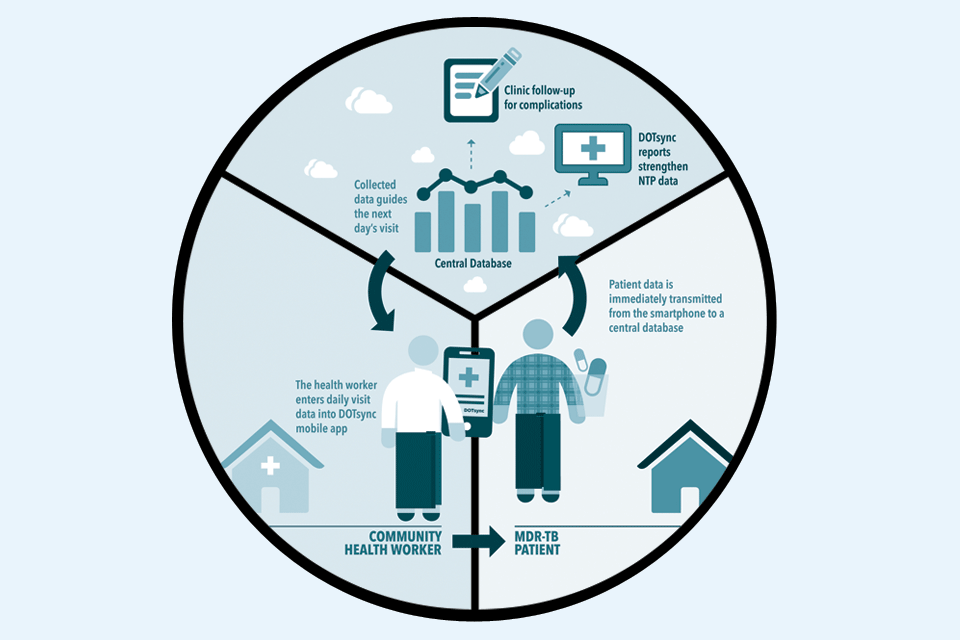Nine million people contracted tuberculosis (TB) in 2013, and 1.5 million died from the disease, according to the World Health Organization. While standard TB can be cured when patients strictly follow a drug regimen lasting six months, inconsistent or partial treatment can lead to multidrug-resistant tuberculosis (MDR-TB), which is much harder to treat.
Ensuring compliance with MDR-TB regimens previously required lengthy hospitalizations, which can cause hardship to patients and is costly for overburdened health systems. The alternative to treatment in a medical facility is outpatient care using directly observed therapy (DOT).
The Control and Prevention-Tuberculosis (CAP-TB) project developed cutting-edge technology, a powerful data collection and patient-tracking app called DOTsync, which empowers community health workers to use smartphones to support MDR-TB patients in their homes. In Myanmar, community workers use DOTsync to log anti-TB drug administration through DOT, refer patients for drug side effects, track monthly nutritional support and follow up with family members who may be exposed to MDR-TB.
In China, the CAP-TB project launched 57 Zone, a mobile app offering support to TB patients through QQ, China’s popular instant messaging service that has nearly 830 million users. Through the app, patients with TB and MDR-TB can discuss common experiences with other patients and ask professionals questions to help comply with treatment. Due to the app’s success so far, the Chinese government plans to expand the use of 57 Zone for TB control throughout the country.

Empowering community health workers to use smartphones to support MDR-TB patients in their homes
